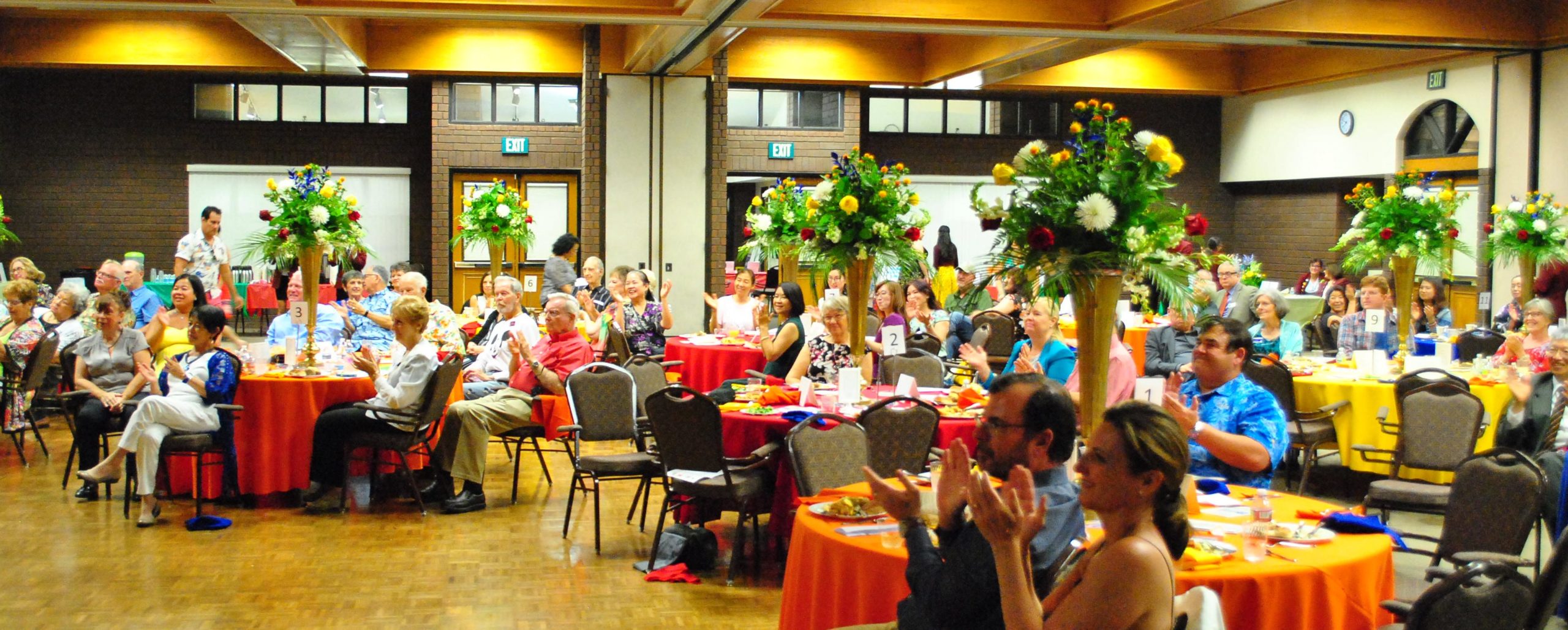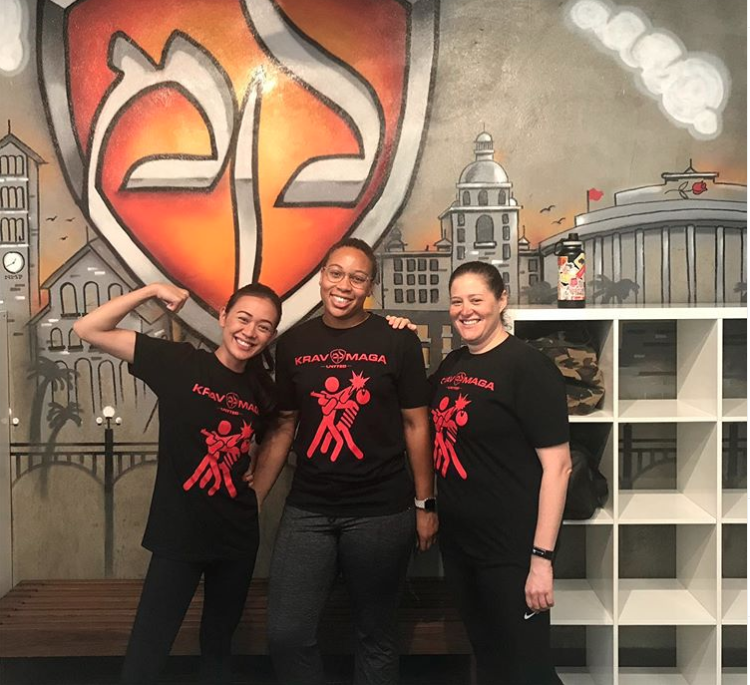
Masters, professionals and enthusiasts collaborate for an evening of city-bonding and fund-raising.
By Galen Patterson
On the evening of Sept. 14, Friends of the Arcadia Museum held what they called a “cultural extravaganza” at the Community Center and Gilb Museum of Arcadia.
The event was named “Faces Of Arcadia,” and raised funding for the Gilb Museum to enrich its exhibits and programs.
The idea came to the event planners when they wanted a theme that would include and educate residents of Arcadia on the different cultures of people that make up the city, Board of Directors of the Friends of the Arcadia Museum Joyce Platt told Arcadia Weekly. The result was inclusive, educational, and entertaining.
Immediately upon entering, attendees were surrounded with a worldwide exhibition, complimented by an open museum, guided by the new staff members and enhanced by free drink vouchers.
The amount of fascinating cultural displays was almost difficult to believe, as people moved from room to room, artist to artist and building to building.

In the back of the Gilb Museum, Betty Zhang and her students played traditional Chinese music on traditional Chinese instruments, with eight Chinese harps playing in harmony with each other. The music filled every square inch of the museum.
Across the lawn, a Ukrainian woman created ornamental Easter eggs with detail and precision, walking her audience through every step of the process from applying beeswax in symbols and lines, to blowing out the yolk and white from inside with the use of two small holes. The art is called Pysanky and is still a tradition in Ukraine. Pysanky dates back to 1300 B.C. and has deep ties to Egyptian symbolism. The eggs’ artist, Nataliya Vivcharenko, makes traditional Ukrainian symbols around them. She draws a fish to represent Christianity and so on.
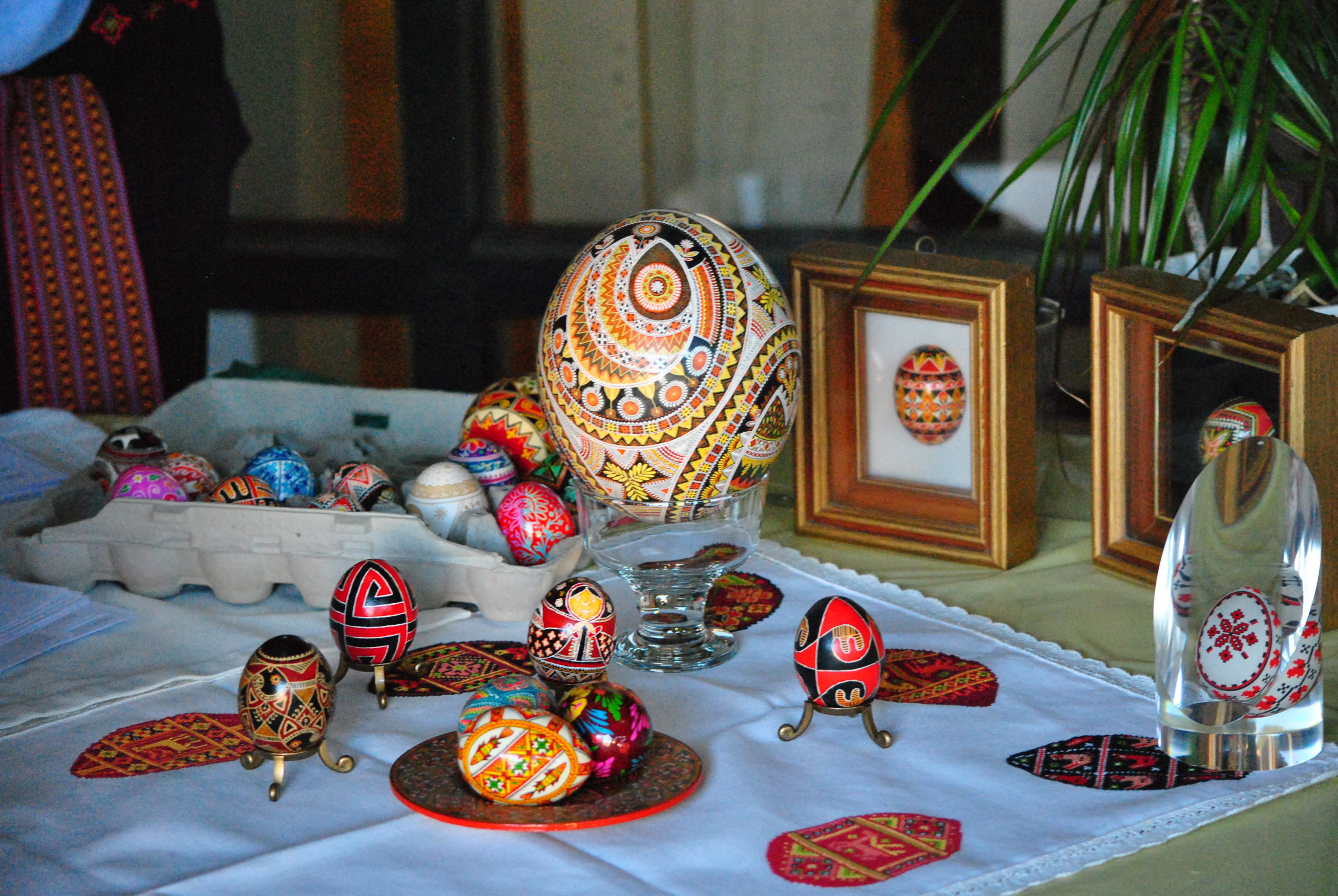
Vivcharenko says some of the symbols people draw today derived from an archaeologic finding of ancient ruins in Ukraine.
Near Vivcharenko was Chinese watercolor artist Master Tam. Master Tam has studied and practiced Chinese calligraphy and painting for over 60 years. He is renowned within the industry and has art displayed in several countries around the world.
Master Tam painted in front of the wandering crowd using various brushes, all created with the hair of different animals. One of his students, Dr. C.P. Cheung, PHD, explained that the different hairs do different things. For example, the wolf’s hair brush is used for more fine detail, while the ram’s hair brush is for more broad distribution of paint.

Dr. Cheung showed onlookers the detail with which Master Tam paints and how the peony he was creating needed to be imperfect to represent the peony perfectly.
The peony is China’s national flower and signifies the many different cultures that make up the whole of China. The peony’s petals are numerous, colorful and loose in shape. “It’s like they are dancing together,” said Cheung.
The colors are made of different minerals and plant ash mixed with water, and applied with animal hair and bamboo brushes against specially-crafted natural paper. Cheung says that Chinese watercolor painting is the integration of nature, raw materials and the human mind.
When Master Tam was finished, he donated his painting to the silent auction inside.
There were many demonstrations from around the world before dining began, but once everyone was called into the community center, the party took a more-lively step up.
The show was hosted by City Manager Dominic Lazzaretto, who introduced the silent auction in the back of the room and the different acts that followed.

The first performance was given by the Gypsy Folk Ensemble, who demonstrated traditional Irish dances. They jumped and swung their legs while keeping their upper bodies almost rigid until they began to systematically move around each other with complicated stepping patterns, while music featuring upbeat violin melodies gave them their beat.
After the display of Irish heritage, the next group to take the stage was called El Sol de Fuego, and represented traditional Mexican dance form the various parts of Mexico.
El Sol de Fuego demonstrated traditional Mexican dancing in different forms, and even showed Arcadia what is believed to be the oldest dance in Mexico from the oldest city in Mexico, Veracruz.
Their performance began with a young man, clad in white with a straw hat stomping his boots to the beat of the music with a female counterpart, also clad in white and triumphantly holding the edges of her gown as they twirled around each other.

The end of their performance saw the dancers rapidly selecting members of the audience to dance with them, and for a moment, more than half of the room danced to traditional Mexican music.
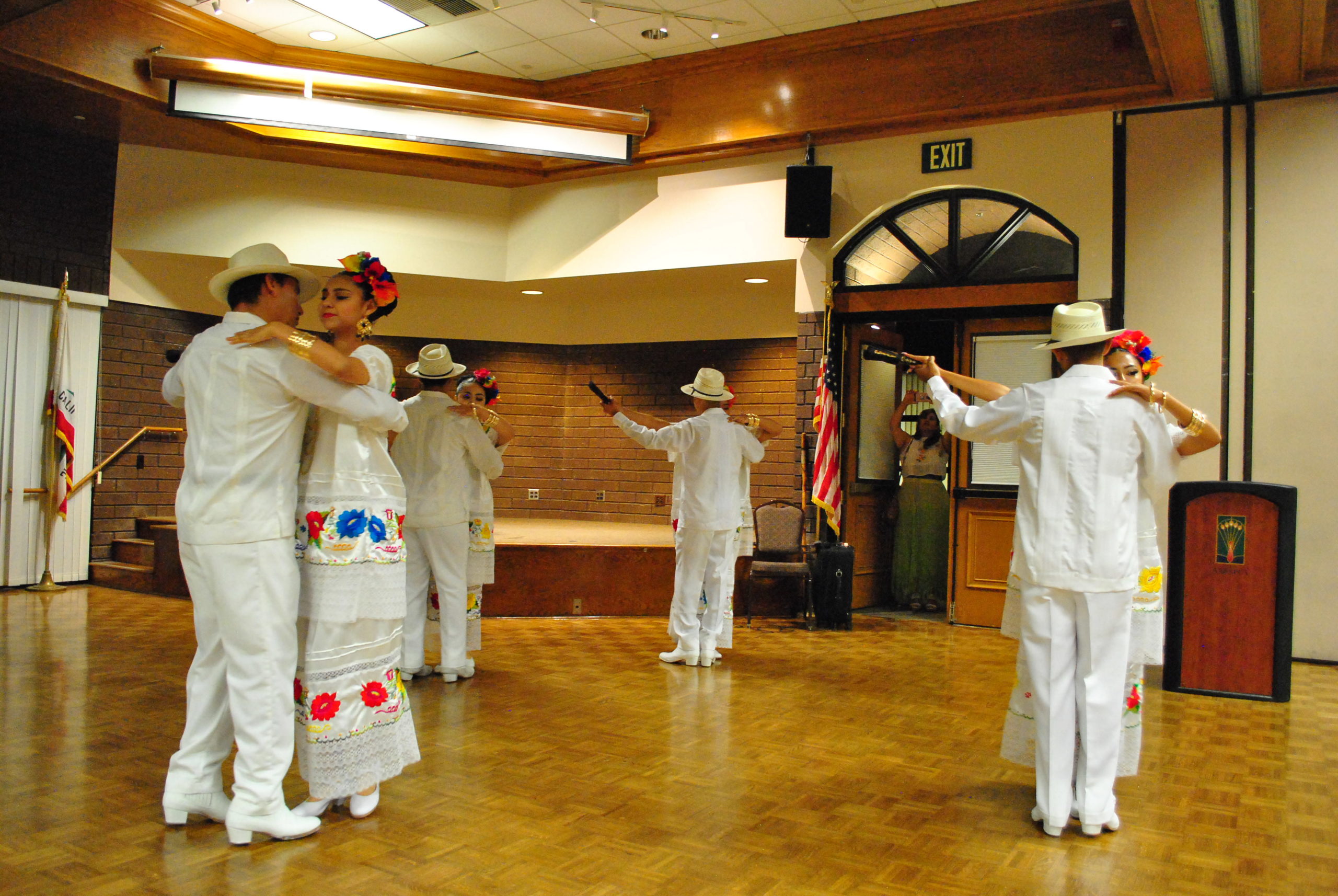
After El Sol de Fuego, the Gypsy Folk Ensemble came back, this time in traditional German dress. They made a short skit of drinking from empty beer steins to set the scene of a small tavern in the Bavarian Alps and Arcadia was there with them.
The German dancing was very lively and featured a curious interaction between dancers that appeared to be equal parts dancing showdown and show of camaraderie.

One of the male dancers took center stage while the other male dancer stood by. The two female dancers continued to dance on the flanks of the man in the center. The man in center stage then began jumping and slapping his feet and knees in step with the music while occasionally shouting in joy.
Shortly after, he turned to his left as if to invite the other man in, who then joined him in the center. As they faced each other, both men began slapping their feet and knees while jumping, giving the impression that although either of them could slip and fall at any second, they were in control of the gravity surrounding them, and they were each masters of slapping, and relying on the other to slap the correct part of the correct appendage at the correct time.
The dance style, known as Schuhplattler, comes from deep in the German Alps, from an area known as Tyrol, which borders Austria, Northern Italy and Switzerland.
Following the Gypsy Folk Ensemble was La Sole Flamenco, a professional Flamenco dancing company, whose founder originates from Spain. Like the previous dancers, La Sole Flamenco stomped their heels to the music, but they did so with such choreography, speed and intensity that they became the instrument. Their heels and movements became the traditional accompaniment to the Spanish classical guitar music played over them.

La Sole Flamenco was graceful, and it almost seemed as though their movements were effortless, but the focused determination of the dancers spoke otherwise and showed the audience that this dance was a disciplined art.

The final act of the evening was Arcadia High School’s own Chanteurs, an upper-level performance choir restricted by audition and skill. They performed two pieces from different parts of Africa, followed by a solo performance with band accompaniment of “The Girl From Ipanema,” a Brazilian song made famous by Frank Sinatra.
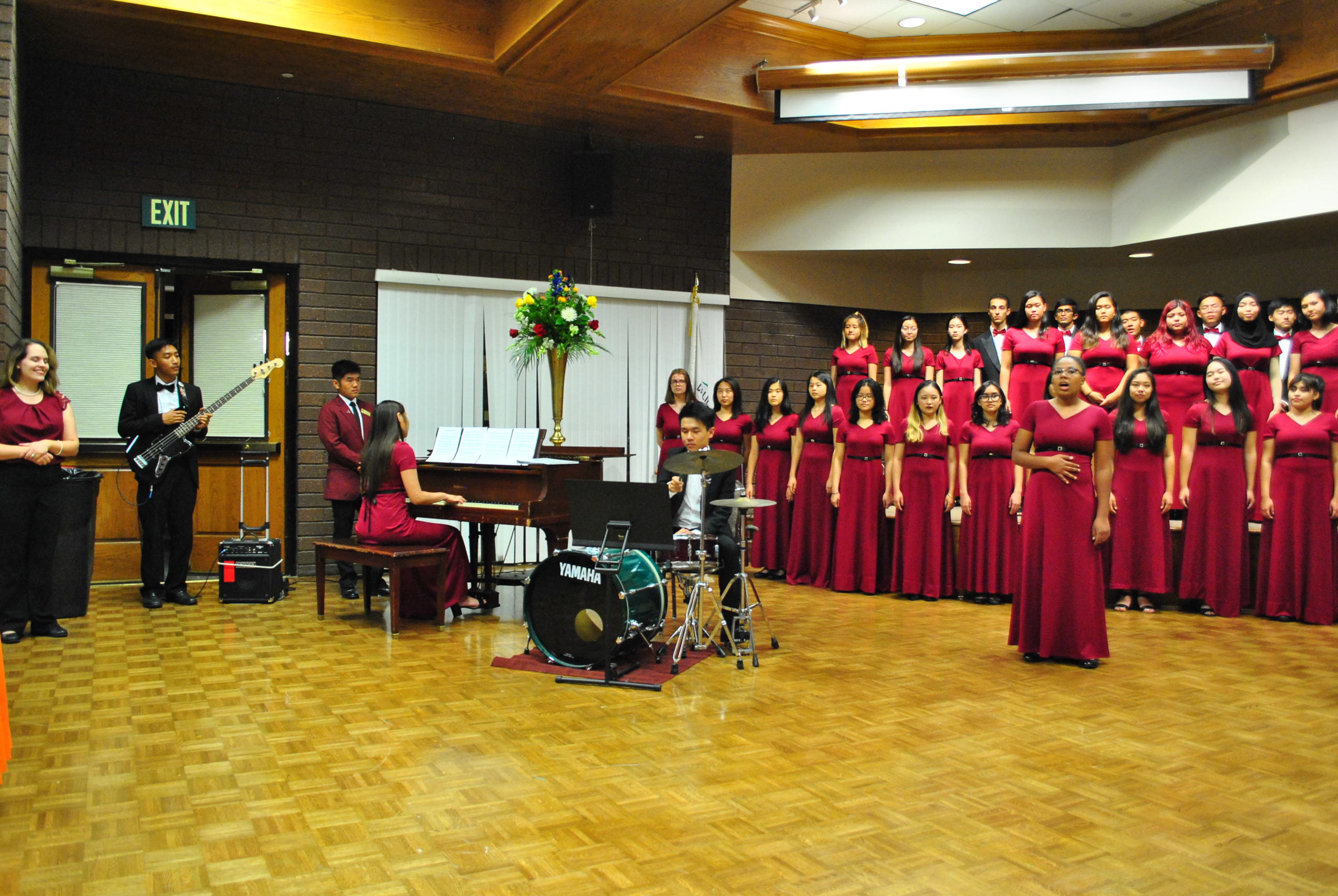
The switch from Africa to South America expanded the representation of one continent to a majority of the Southern Hemisphere in an area only loosely connected by Pangea.
The choir then sang a rendition of “Oye Como Va,” written by Tito Puente and made famous in the 1970s by Carlos Santana and Puente himself.
After that, they sang the popular 1980s-era song “Africa” by Toto, which the audience genuinely appreciated.
Faces of Arcadia was many things. It was a show of international culture and art, it was a dinner and dance party, it was an auction, and a gathering of the world in one room.
Seeing the art, culture and dance demonstrated by people who have lived it or studied it, one can make the assumption that this is what humanity has in common.
One can hear the music, watch the movements and imagine our ancestors around the world, sitting around fires, creating beats and rhythmically moving to them with gestures that made sense to the way they lived at the time. They praised their gods, attracted prospective lovers and recorded their history. Maybe they toughened their nerves in their hands, legs and feet to be able to withstand harsh mountain hunting expeditions or waved their gowns to prevent falling in their traditional dress.

The event raised more than $2,500 for the museum and, more importantly, it brought Arcadia together around the statue of Arcadia pioneer Hugo Reid, his American Indian wife, and their children. There could be no better setting for such an event.

